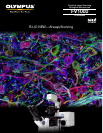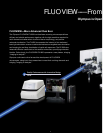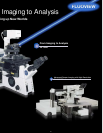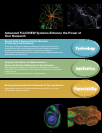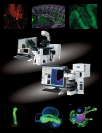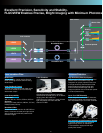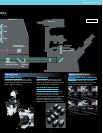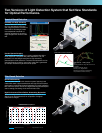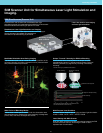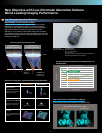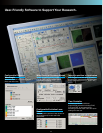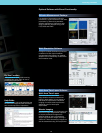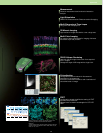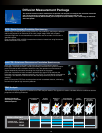
Technology / Hardware
SIM (Simultaneous) Scanner Unit
Combines the main scanner with a dedicated laser light
stimulation scanner for investigating the trafficking of fluorescent-
labeled molecules and marking of specific live cells.
Simultaneous Laser Light Stimulation and Imaging
Performs simultaneous laser light stimulation and imaging to
acquire images of immediate cell responses to
stimulation in photobleaching experiments.
Modifiable Stimulation Area During Imaging
The stimulation area can be moved to a different position on the
cell during imaging, providing a powerful tool for photoactivation
and photoconversion experiments.
Wide Choice of Bleaching Modes
Various scan modes can be used for both the observation area
and stimulation area. Enables free-form bleaching of designated
points, lines, free-lines, rectangles and circles.
SIM Scanner Unit for Simultaneous Laser Light Stimulation and
Imaging.
Branching of laser in
laser combiner.
Lasers are used for both imaging
and laser light stimulation.
LD405
LD635
AOTF
AOTF
LD473
LD559
Multi-Purpose Laser Combiner
All lasers can be used for both Imaging and laser light stimulation.
LD405 / LD635 / AOTF / AOTF / LD473 / LD559
Laser Sharing with Main Scanner
Dual fiber laser combiner provides laser sharing between the SIM
scanner and main scanner, eliminating the need to add a
separate laser for stimulation.
Unique "Tornado" Scanning for Efficient Bleaching
Conventional raster scanning does not always complete
photobleaching quickly. Tornado scanning greatly improves
bleaching efficiency by significantly reducing unnecessary
scanning.
*Tornado scanning only available for SIM scanner.
Tornado scanning
Superfluous scanning areas.
ROI (region of interest)
scanning
ROI (region of interest) scanning.
Tornado scanning.
Cell membrane stained with DIO, and subjected to both
conventional ROI and tornado scanning.
8



